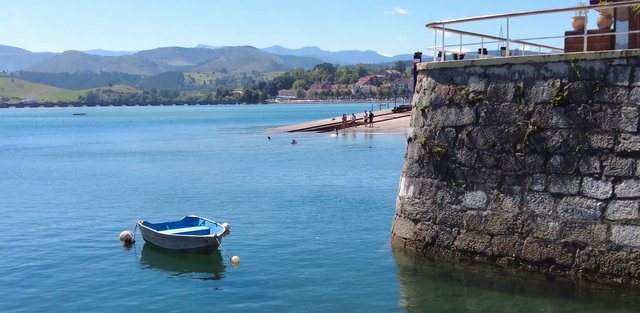
Hello, dear travelers. In this post, I would like to share our journey through Cantabria. After leaving Asturias, we headed to the town of San Vicente de la Barquera in Cantabria.
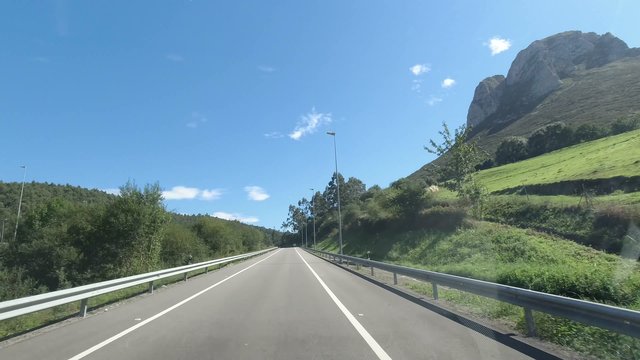
The town is split by a bridge. The weather here is 10 degrees warmer than in Asturias, so all the shutters are closed. We stopped at the mouth of the Escudo River and the water was incredibly clear, even while we were there, children were swimming.

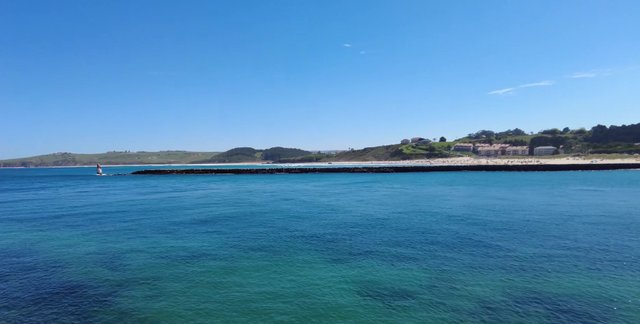
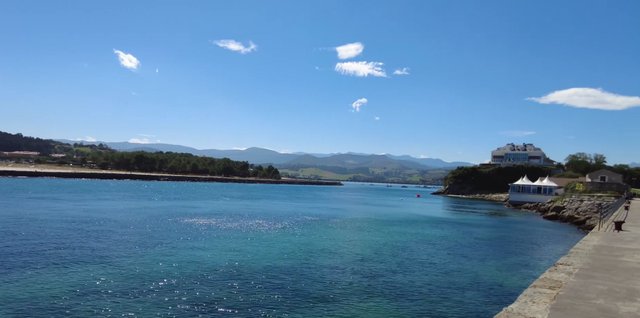
We stood at the far end of the breakwater and listened for a while to the crashing waves hitting the rocks. It truly sounded like thunder.
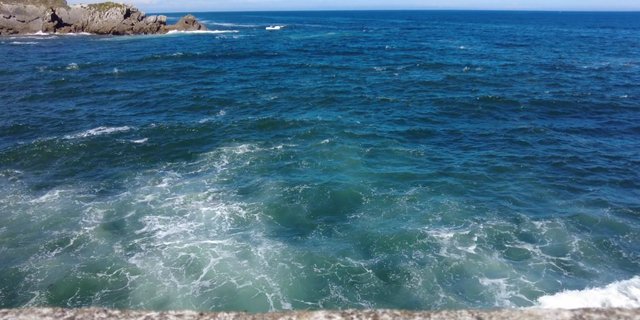
Next to the port, there's the sanctuary of Santa María de Lebeña, built to help sailors avoid getting lost in the ocean. According to legend, Santa María would appear on a small boat and guide sailors with the wind direction for centuries. A popular festival is held here each year to commemorate these events.
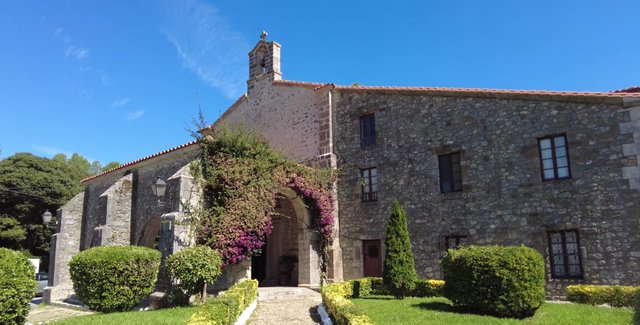
There was a sign indicating that collecting shellfish without a permit is prohibited. I was curious about what kind of creatures lived there. Of course, I didn't do anything illegal, but I was truly interested. I walked around to see what kind of shellfish and other sea creatures I could find.
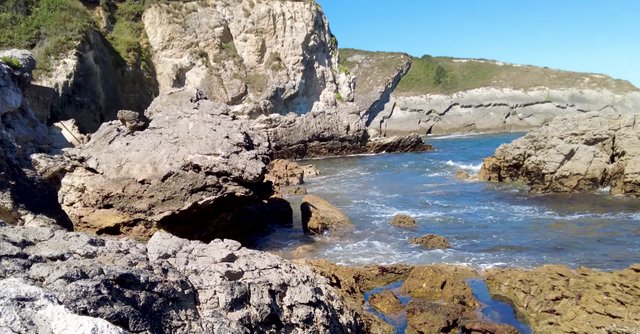
I saw a few marine creatures. They seemed scared and hidden, as if they were worried that I would jump into the water to catch them. There were plenty of small crabs, but as I approached, they hid among the rocks.
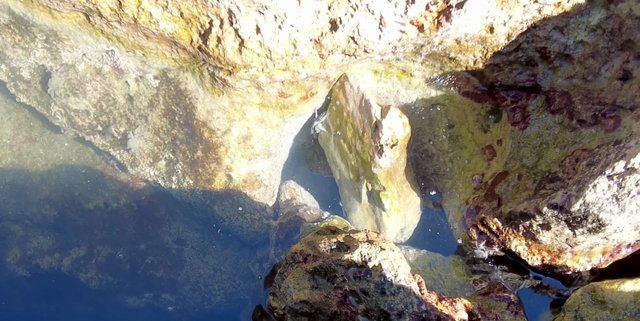
As you know, we love delicious food, so we stopped for lunch at a good restaurant and tried black paella. The color of the paella comes from octopus ink. It was truly delicious, but it turns your teeth black.
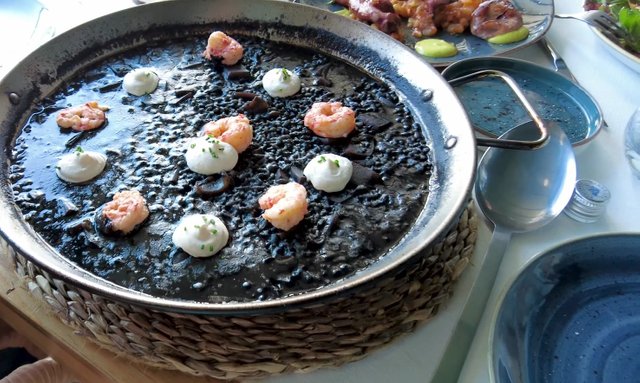
While heading to our next stop on the map, we decided to stop at this scenic spot because it had such stunning views.
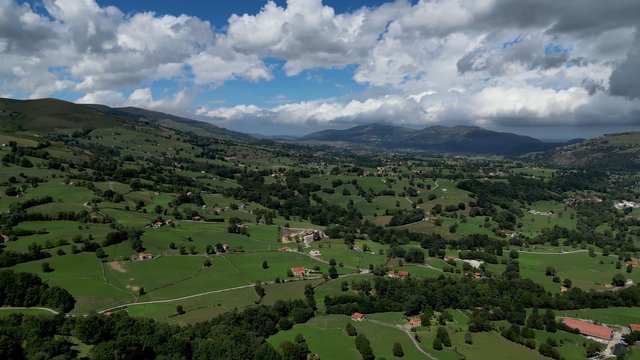
There are a lot of cattle here because livestock farming is common in this region. Our guide told me that these cows have a good life and get weekly massages to produce more milk. What a life!
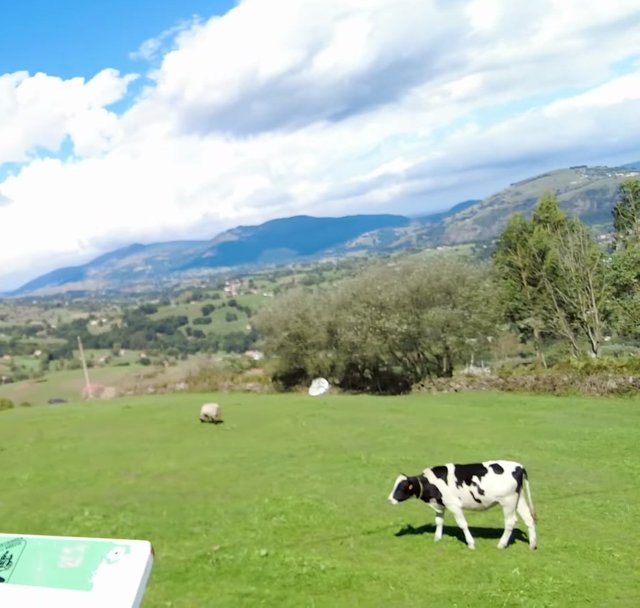
The following day, our first stop in the Pas Valley was Castaneda. The place we visited was the Colegiata Church of Castaneda. It's a very old church. Santa Cruz de Castaneda was founded as a Benedictine monastery in the 10th century and later became the Colegiata Church in the 12th century. The only remaining structure from the original monastery is this church, which was built in the Romanesque style in the 12th century and later underwent additions and renovations over time.
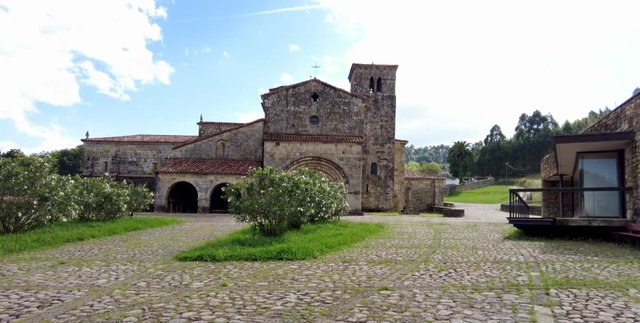
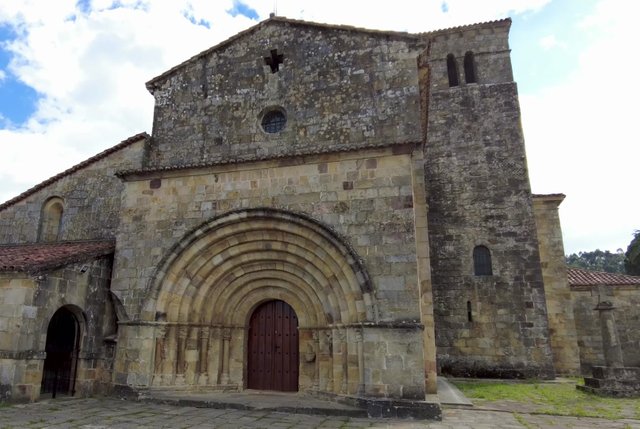
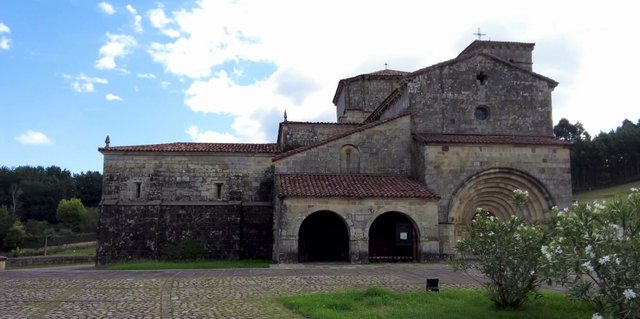
We Encountered a Franco-Era Monument. During Spain's Freedom War, this monument was built to pray for those who fought. Franco supporters called their fight against the Republicans the Freedom War. Here, you can see that symbol too. You probably know what it represents. I didn't realize these monuments still existed.
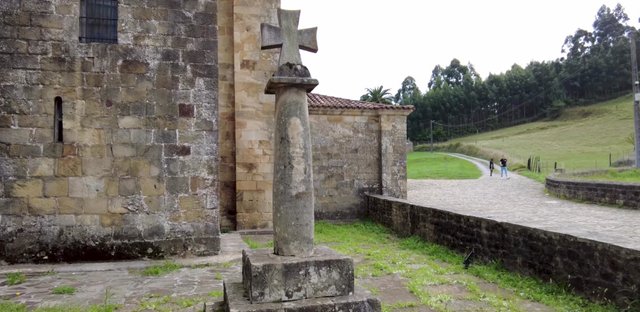
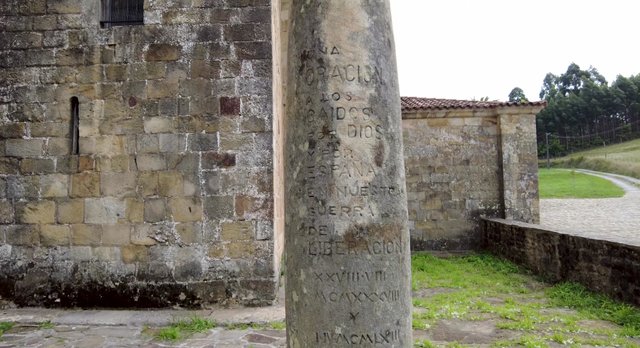
We stopped at the next scenic spot. There are many beautiful viewpoints here. We enjoyed the beauty of the Pasiegos Valley, with its stunning mountains and meadows. There are many shepherd's huts at the summit. Pasiego shepherds would come here with their animals. The locals in this region are known as Pasiegos. Because they have lived in these mountains in isolation for centuries, they have a unique genetic makeup; they are typically strong, tall, have coarse hair and large noses. Their origins are unknown and there are various theories. The Pasiego women also have an interesting history, but I'll talk about that later when we visit the museum.
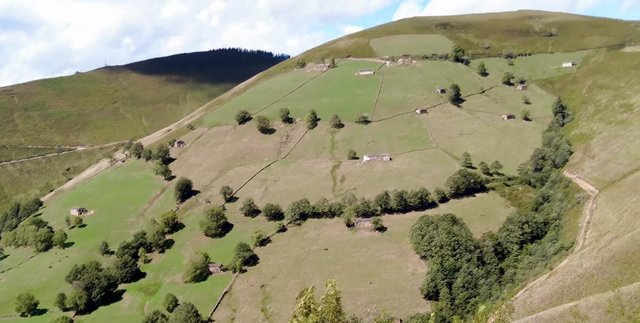
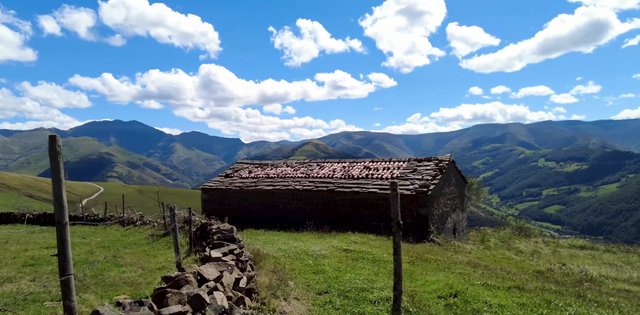
We saw a Pasiego shepherd's hut within walking distance on the mountain. We decided to see if we could go inside. Eventually, we reached the hut, but it was fenced off and we couldn't enter. It appeared that the place was still inhabited because there was a car, a few cows wandering around and the hut was intact. The roof of the hut caught our attention; it was made of slate stone, which is waterproof, providing good protection from the rain. We can imagine what shepherds used to do here; they would bring their animals to this mountain, leave them in the area where the cows are grazing and live in the hut to watch over them.
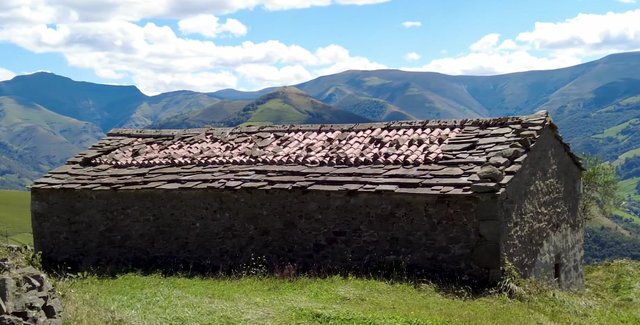
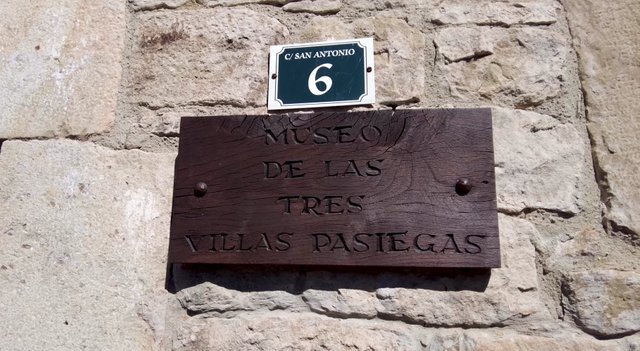
While walking through this village, we stumbled upon a museum dedicated to the Pasiegos' way of life. The museum guide was a Pasiego woman and she told us a bit about their history. Life used to be very tough for women here, but now, of course, everything has changed. In the past, Pasiego women would go to cities like Madrid, Barcelona and Granada to raise the children of important people. There was even a square in Granada called Plaza de las Pasiegas where these women could find work taking care of aristocratic or royal children. These women were typically between 19 and 26 years old. When they had three children, they would leave them here and go to work in the city. For example, if an aristocratic woman had a baby and needed a wet nurse, she would hire one of the Pasiego women. The term milk sibling comes from this. They would go to the cities for 3-4 years, then return and have another child and then go back to work in the city. In the Middle Ages, kings, aristocrats and the bourgeoisie were raised on milk from Pasiego wet nurses. On the museum's second floor, there were old books, records and other interesting items.
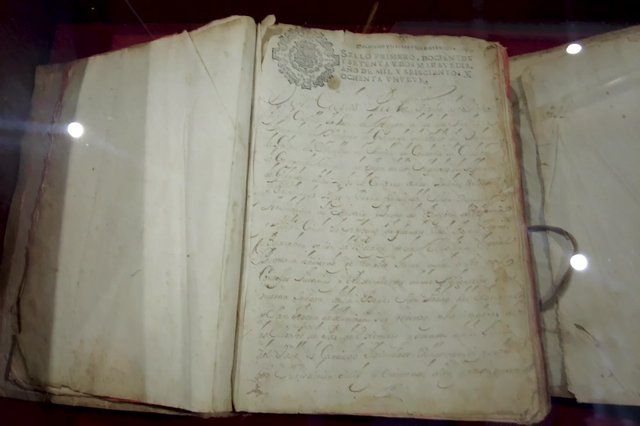
We also saw the old and new recipes for Sobado, a local dessert.
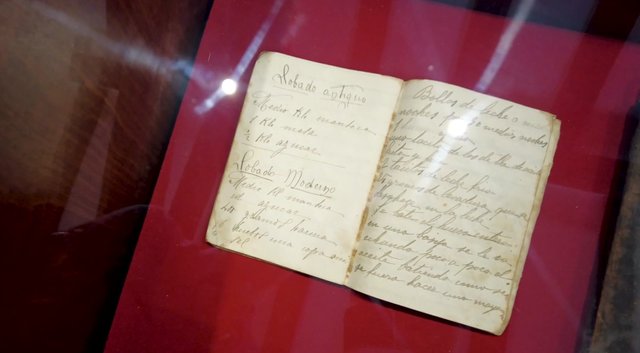
The building was built in the 18th century. Everything in the museum was donated by the villagers. All these items were found in their homes and used in their daily lives. People lived in wooden houses where animals were kept on the ground floor, while the upper floor was their living area and hay storage. Here, there was a bed where they slept and next to it was a cooking area. Their food wasn't very diverse in terms of variety, but it was healthy and because they did a lot of physical work, it was nutritious.
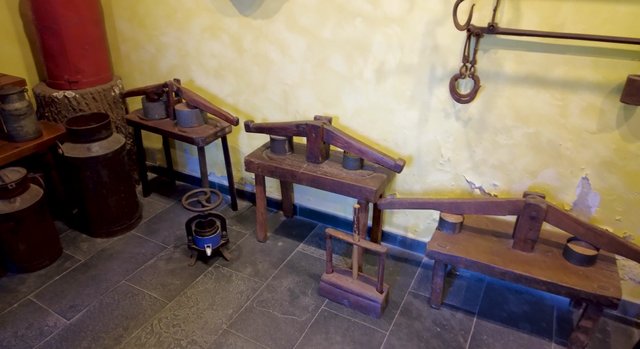

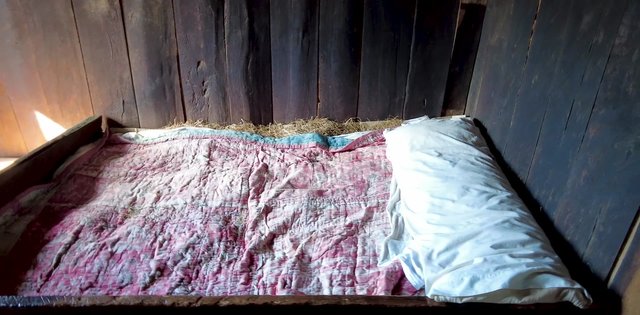
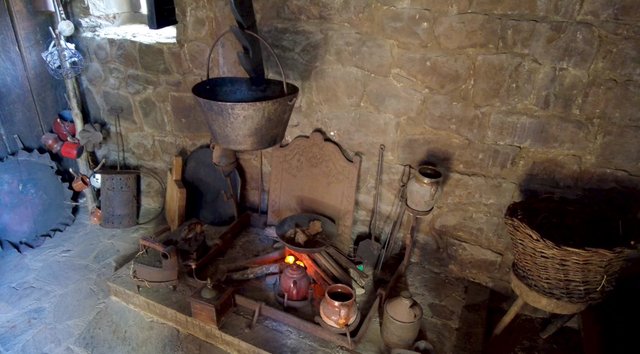
We climbed to the top of Mount Lapinyuga. The view was incredible. It's very windy here, which is why there were wind turbines. We felt like we were on top of the world.
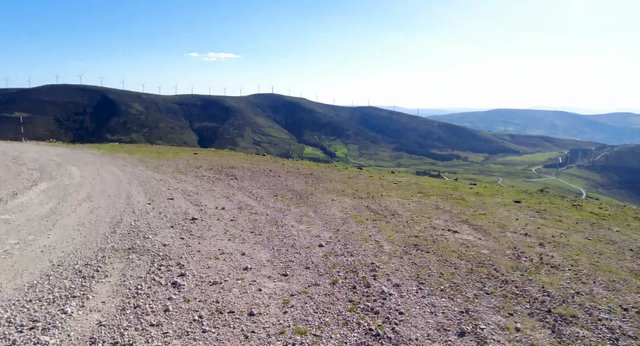
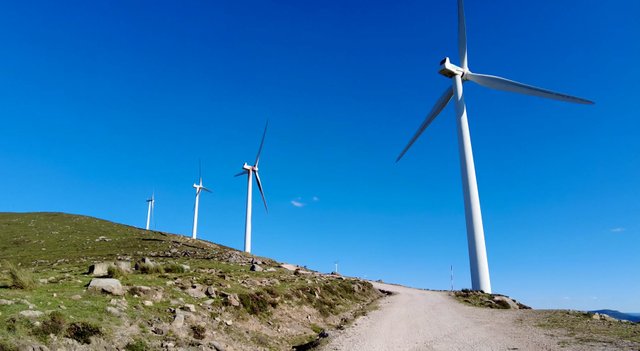
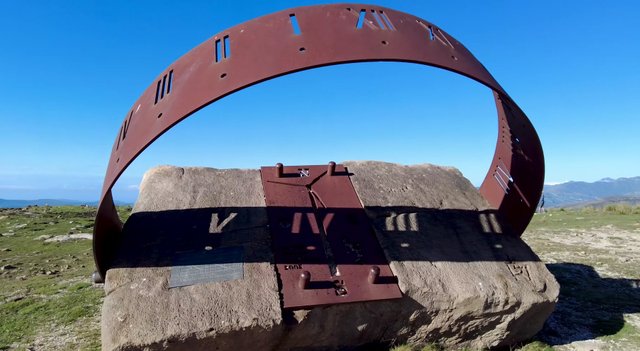
This is also where the boundary between Cantabria and Burgos passes. The stones marked the border between Burgos and Cantabria. This concludes my travel story for today. I hope you enjoyed it. Thank you for reading.